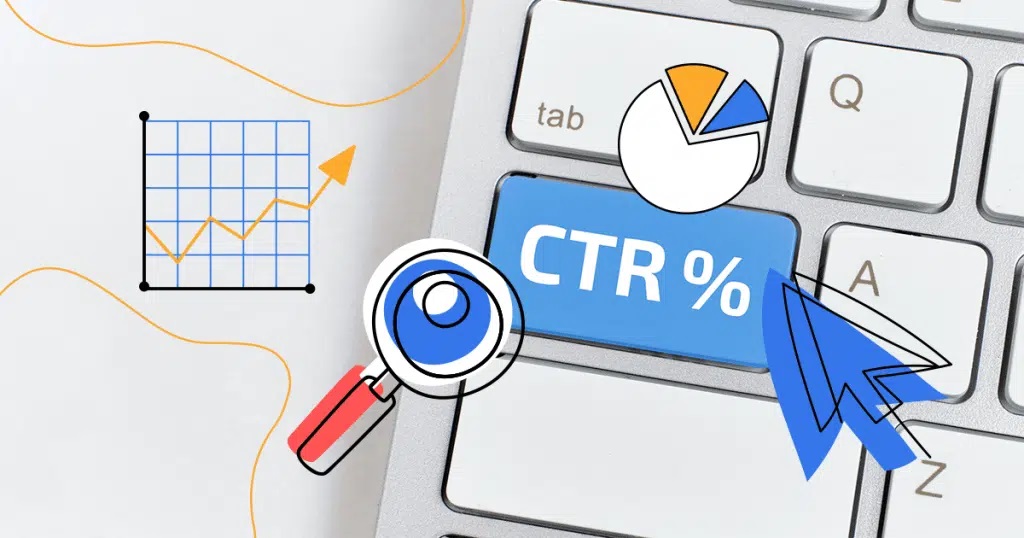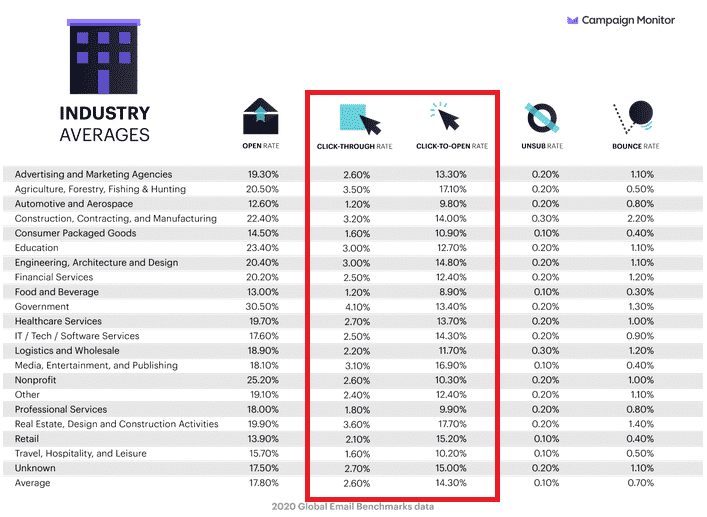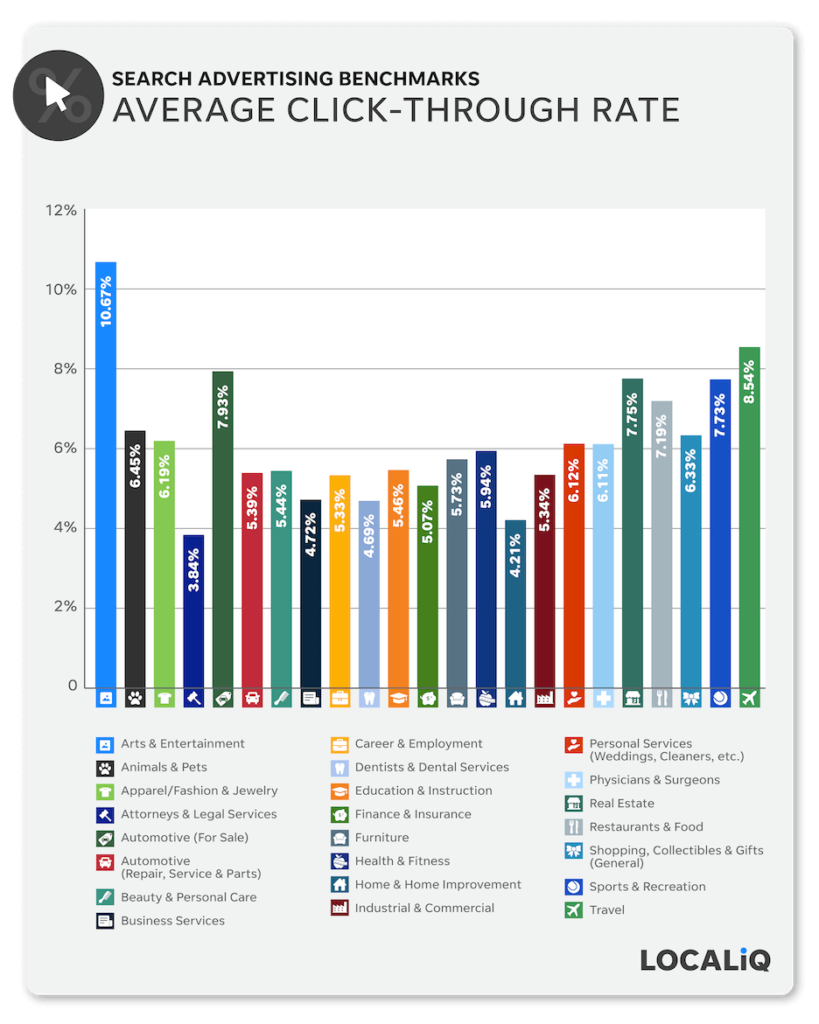Being able to measure in minute detail your performance is arguably one of the undeniable advantages of digital marketing. All kinds of indicators (KPI) enable you to monitor the evolution of your campaign, understand what works (and what doesn’t), and, if needed, to fine-tune it to reach success.

Click-through rate (or CTR) is one of those metrics. And even one of the most important for marketers as it assesses how well campaigns are performing in several web marketing fields: digital advertising, emailing, retargeting, and SEO. Let’s dive into what is CTR to better understand why and how it can be useful for your digital marketing strategy!
What is click-through rate?
CTR, which stands for click-through rate, is a performance indicator used by marketers to measure the number of users who have clicked on a piece of content (most of the time a link or an ad) and assess the effectiveness of a communication campaign.
Every clickable element on a web page can be assessed regarding its CTR. Click-through rates measure the success of a link in an email, a CTA button placed on a landing page or a blog article, an organic link on a SERP (search engine result page), a sponsored link, an ad on a network (search, Display, social), etc.
Wondering how to calculate CTR? That’s easy! Divide the number of clicks by the number of impressions and multiply the result by 100 to get a percentage. The CTR of an ad generating 10 clicks for a total of 1,000 impressions is 1%. This result falls within the average range since median CTR varies from 0.05% and 5% with higher differences according to the industry and the type of campaigns. Bear in mind that CTR only indicates how many times a link had been clicked by a unique visitor. In other words, your CTR won’t rise if a user clicks several times on the same link.
Obviously, marketers don’t need to calculate the click-through rate themselves. Several analysis tools can do the job for you. As part of a Google Ads campaign, for instance, ads and keywords are linked to specific CTRs. For an SEO strategy, you only have to connect to Google’s Search Console, etc.

How do you use CTR?
In a nutshell, CTR is a metric that measures how effective a clickable element and, more generally, a marketing campaign is. But what is CTR actually used for?
What shows CTR is that a piece of content generating more clicks is more relevant than others. With this metric, the marketer managing the campaign can focus on the successful actions but also adjust an unfruitful campaign. In this way, they can test their ideas and put back their strategy on the right track by relying on a sound and relevant metric.
Yet, everything depends on the marketing channel used!
Using CTR for an advertising campaign
When it comes to track the performance of a paid advertising campaign on the internet, click-through rate is extremely indicative. Let’s take the example of a Google Ads campaign: a high CTR shows that internet users think the ad (depending on the network where the ad is displayed it can be a sponsored link for instance) is useful to them. This means that the targeted keywords are relevant, and that the ad appears on the right channels, whether it is on the classic SERP, the Shopping tab or partners affiliated to Google’s display network.
Here, click-through rate has another key role: the ad platform takes it into account to give a quality score to the campaign that will in turn be considered for its ranking. Now, a well-ranked ad is likely to get a higher position on the search results and thus to have a lower “pay-per-click” (PPC), thus making the campaign more cost-effective.
To improve the CTR of a Google Ads campaign, the first step is to target the most relevant (or less competitive) keywords. Social network’s ad platforms like Facebook Ads or Instagram Ads work almost the same way.
Using CTR for an emailing campaign
The results of an email marketing campaign are evaluated with several key indicators, including CTR. However, to be relevant, the CTR of such a campaign must be considered with other KPIs, especially CTOR (click-to-open-rate) since the mail must have been opened first to click on the link inside.
While CTR measures the number of people who clicked a link in your email, CTOR is more precise since it is relative to the actual number of emails opened. For instance, 10 clicks in 1,000 emails sent will give a CTR of 1%, but 10 clicks in 150 emails opened will give a CTR of 6.66%, which is more interesting.
The following chart gives you an idea of the average performance for an emailing campaign in several industries:

(Source: Campaign Monitor)
Using CTR for an SEO strategy
Measuring CTR can also be useful as part of an SEO strategy. This amounts to considering the number of people who click on organic links, a metric you can easily find on Google Search Console.
CTR is an important indicator in SEO because search engines assess the relevance of a result according to the traffic it generates. A link with a high CTR means that the algorithm gives the users the answers they are looking for, since they are more likely to click it to go further. A page with a low CTR is less likely to climb up on the SERP rankings, while a popular page gets better visibility.
Using CTR to measure conversion (with call-to-action buttons)
CTR can also be measured for CTA buttons. This metric is all the more important as a performing CTA button is linked to a potentially higher conversion rate.
Analysing the click-through rate of a CTA button is easy: the higher the CTR, the more effective the button. If the CTR is low, the goal hasn’t been reached, and changing the CTA is essential so that it becomes more compelling for the target audience and generates more clicks.

Why CTR shouldn’t be your only yardstick metric
You may think that, for a marketer, getting a high CTR is an end in itself. A good CTR does prove that the content is relevant and the campaign effective, since a user who clicks on a link, an ad or a CTA is necessarily interested in the advertiser or its product or service. Moreover, when retargeting your campaign, click-through rate is even more relevant since it shows that users have been extremely well targeted.
But, actually, CTR is a highly relative indicator. It must be considered within its context: industry, content format, acquisition channel, reputation, etc. Here’s why.
- CTR can vary completely with the industry, since some sectors are more or less likely to get searches on the web. It makes sense for an online seller to target a high CTR but not so much for a corner seller. Here’s another example: a flight comparison website is more likely to have a higher CTR than a law firm, whose reputation relies more on word of mouth. As you can notice on the following chart, CTR varies significantly according to the industry considered: on average, from 3.84% for the legal services to 10.67% for the arts and entertainment industry.

(Source: Localiq)
- CTR is also likely to change according to the acquisition channel targeted. Regarding Google Ads advertisements, the average CTR for the search network (paid links on the SERP) is 3.17% but only 0.46% for the Display network (source). Such difference is due to a highly relevant sponsored link that is displayed when the user searches on the internet while discovering a brand or evaluating alternatives. Plus, CTR is higher on mobile in both cases – 4.10% on average for the Search network and 0.60% for the Display network (source) – because mobile technology drives more users to click.
- The content format also has an impact on CTR. A video, for instance, generates on average a CTR twice higher than that of a mere image.
- The company’s or brand’s reputation also matters. A popular brand is allegedly more trustworthy, and as a consequence generates a higher average click rate. On the opposite, a start-up with a CTR of 1 or 2% for its first campaign has every reason to feel pleased.
Apart from CTR, other metrics should be taken into account, such as PPC (in paid advertising campaigns) and the conversion rate (which measures the number of users who made an action after having clicked a link). Those complementary indicators help you put CTR into perspective. A CTR of 1% that leads to a conversion rate of 15% is a great result, while a CTR of 20% that does not lead to any sales does not bode well.
In short, despite being an essential indicator in digital marketing – that’s why it is used so often – what is click-through rate for if it’s not put into perspective? Considering CTR context and comparing this metric with other KPIs is crucial to assess the most accurately possible the performance of a marketing campaign.












